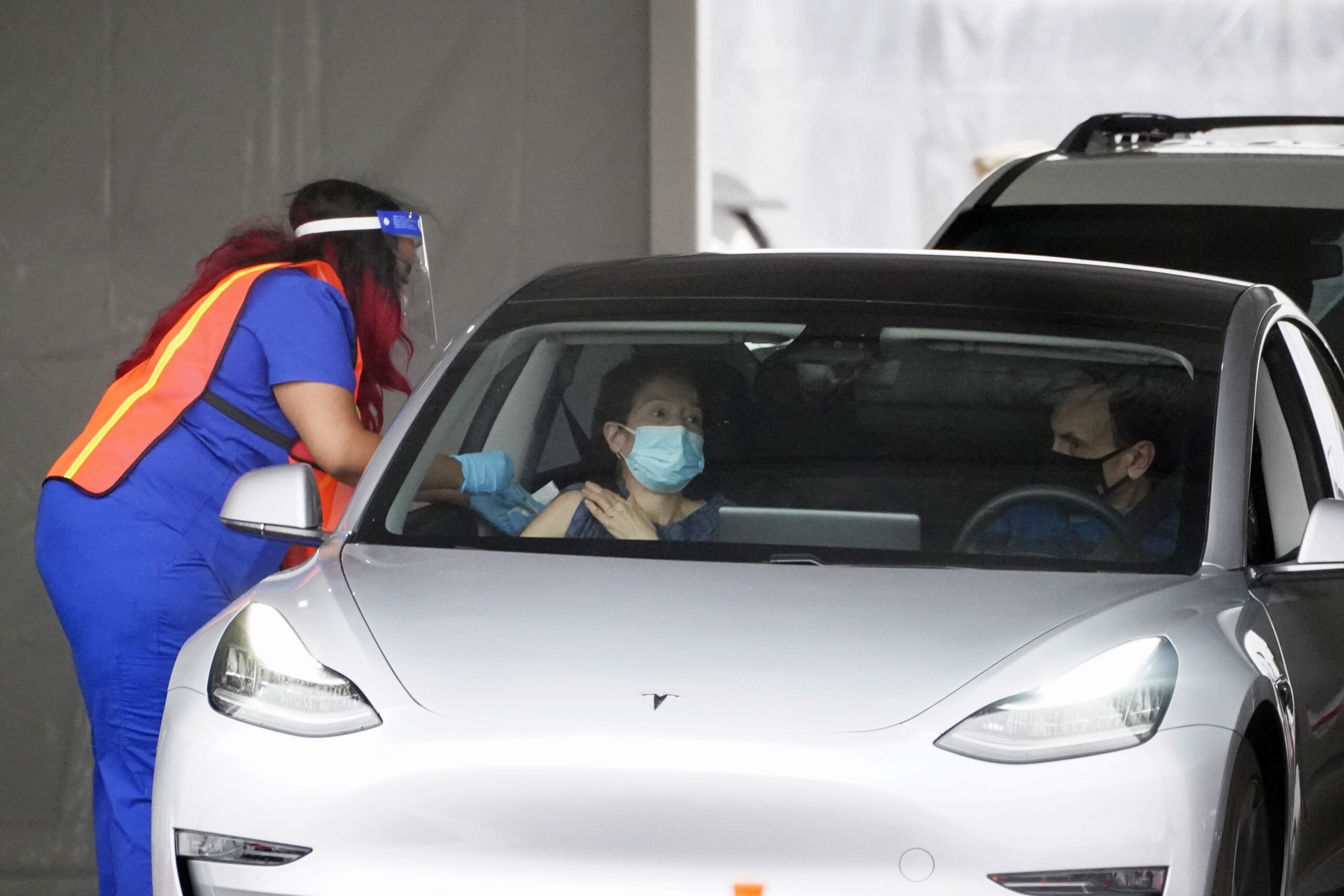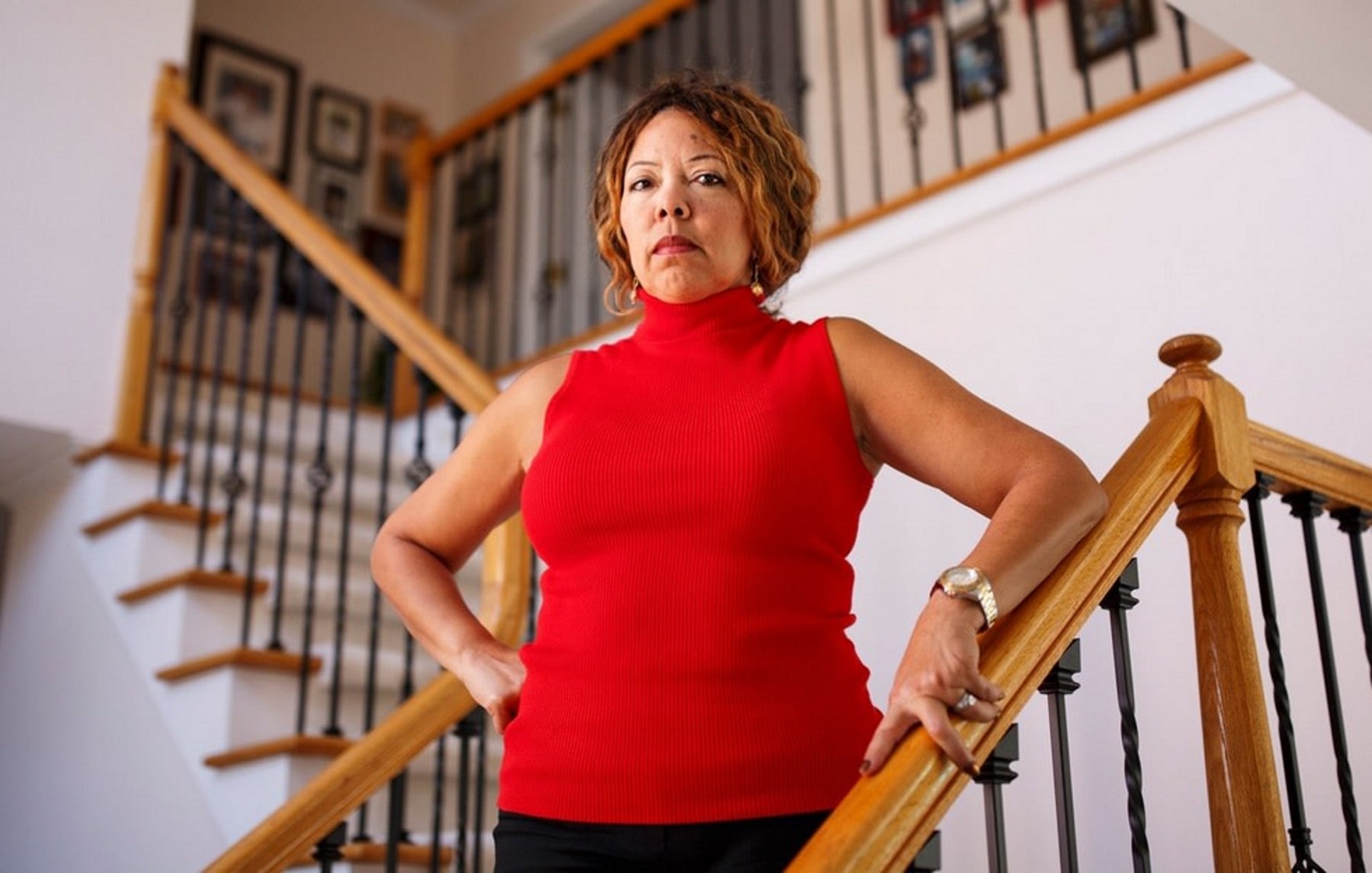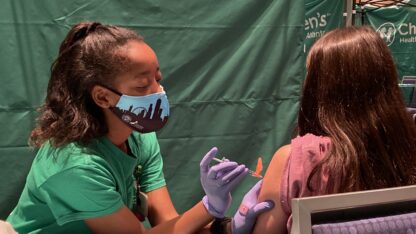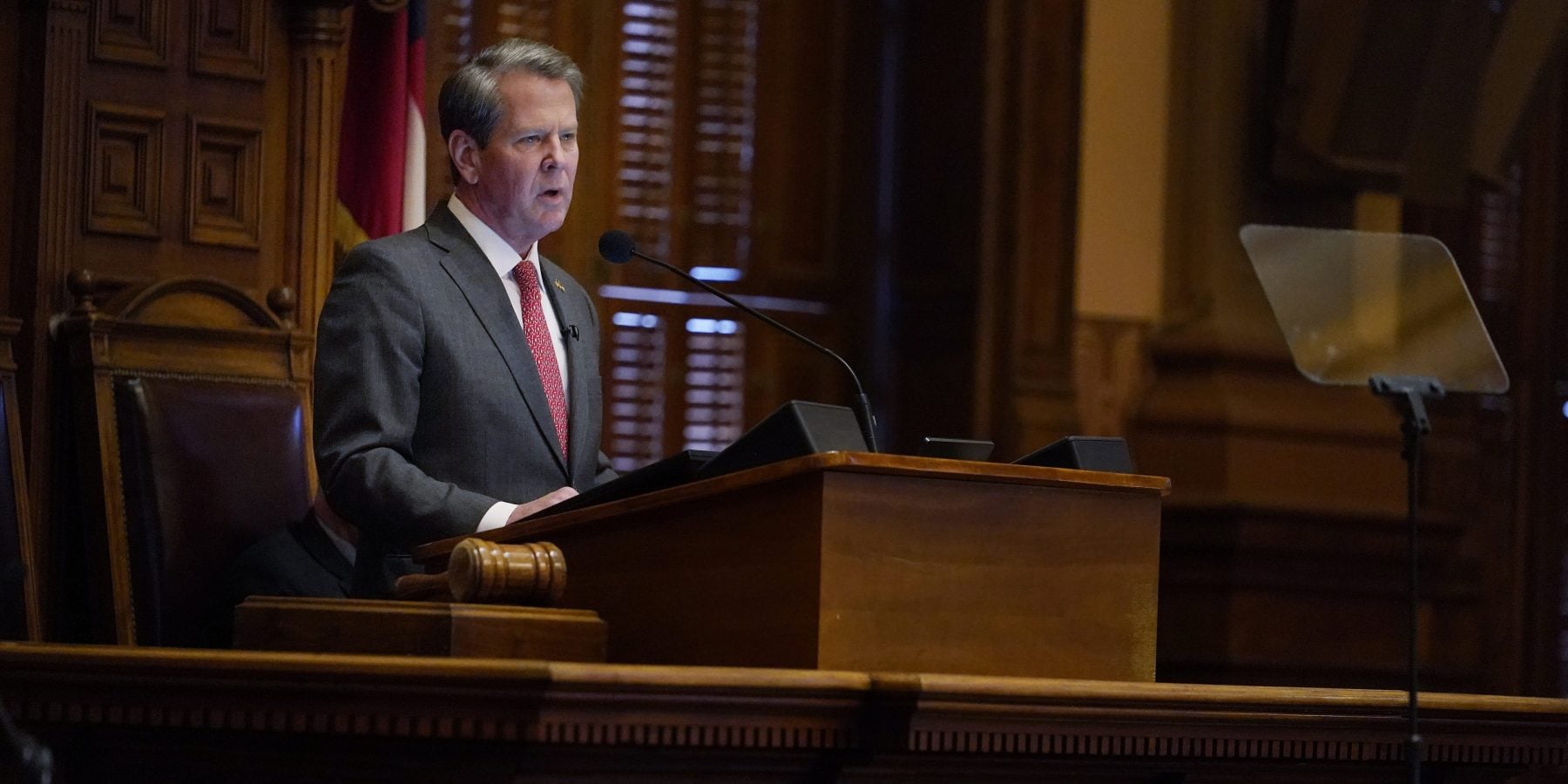One Year After Georgia’s First COVID-19 Cases, NPR Analysis Ranks The State Last In First Vaccine Doses

At the Delta Flight Museum in Atlanta, a woman gets a COVID-19 shot Feb. 22 at a mass vaccination site, one of four sites located in Georgia. According to an analysis from NPR, Georgia ranks at the bottom among states that have administered the first dose of the coronavirus vaccine.
John Bazemore / Associated PRess
It’s been one year since the first cases of COVID-19 were confirmed in Georgia.
But one year on, it’s the state’s vaccine distribution progress that has taken center stage because of the vaccines’ crucial role in ending the pandemic.
According to an analysis from NPR, Georgia ranks at the bottom among states that have administered the first dose of the coronavirus vaccine. The national average is 15.3%, compared to Georgia’s 12.1%.
“It depends on which metric you’re looking at,” said Cody Hall, director of communications for Gov. Brian Kemp. He pointed out that in terms of second doses administered, Georgia ranks higher.
According to NPR, Georgia ranks 40th for second doses, with 7%, versus the national average of 7.7%.
“One of the things we continued to be constrained by is overall supply,” Hall said.
Plus, there are factors causing a “significant lag” between when a vaccine is received and when it is administered, including when the vaccine is shipped, how long it takes to get from the state to providers and how long it takes Georgians to make appointments.
The state has roughly enough vaccines to inoculate 15% of the population, he said.
“If you look at the percentage of vaccines administered that we have been shipped, we’re seeing roughly 80%,” Hall said. “So, eight out of 10 vaccines that have been shipped have been administered.”
Hall also highlighted that Georgia is “leading the country” in terms of the number of seniors that have been vaccinated, which stands at nearly 60% of Georgia’s population over 65.
“When 70% of your deaths to COVID are over the age of 65, making that level of significant progress in that key metric is a good indicator that you’re protecting the most vulnerable, preventing hospitalizations and preventing more deaths,” he said.
The state surpassed more than 2 million doses given out over the weekend and beginning March 8 will expand vaccine eligibility to new groups of Georgians. They include pre-K through 12th grade teachers and school staff in public and private schools, adults with intellectual and developmental disabilities and their caregivers, as well as parents of children with complex medical conditions.
In a statement over the weekend, Gov. Brian Kemp highlighted that 1 million doses had been administered in 25 days, calling it “significant progress.”
The state opened four mass vaccination sites a week ago in Hapeville, Macon, Albany and Clarkesville.
“With the recent approval of the Johnson & Johnson vaccine, and increased dose allocation from both Pfizer and Moderna, the state expects more vaccines will be available in the coming weeks.”
The state expects to receive 83,000 doses of the newly approved Johnson & Johnson vaccine within the week.
Federal Relief
Many states, including Georgia, are looking to the federal government for help in speeding up vaccine distribution.
Under the current $1.9 trillion Democratic-led coronavirus relief package, which is expected to be considered by the U.S. Senate this week, Georgia would receive more than $4 billion in direct state aid, plus more than $3.5 billion for local governments and an additional more than $4 billion for pandemic-response efforts in Georgia schools. The grand total of funds appropriated to the state nears $15 billion, according to Sen. Raphael Warnock’s office.
But Kemp, who is a Republican, has taken issue with the package, known as the American Rescue Plan.
He argues that because the $1.9 trillion proposal uses a funding formula that incorporates states’ unemployment rates, the proposal “rewards lockdown states with high unemployment rates” and punishes states like Georgia, whose unemployment rate lies below the national average.
Kemp said the proposal hits Georgia “the hardest,” by sending nearly $1.3 billion less to Georgia than the state would have received under other federal formulas.
Previous relief packages, including the CARES Act from March 2020, administered state aid based solely on population.
Democratic Sen. Warnock of Georgia has strongly defended the plan.
“This robust relief is what Georgians have long needed, but wasn’t possible before — and now the Senate needs to get it over the finish line so we can finally get these federal investments out the door and into the hands of Georgians who’ve waited too long for help,” he said.








